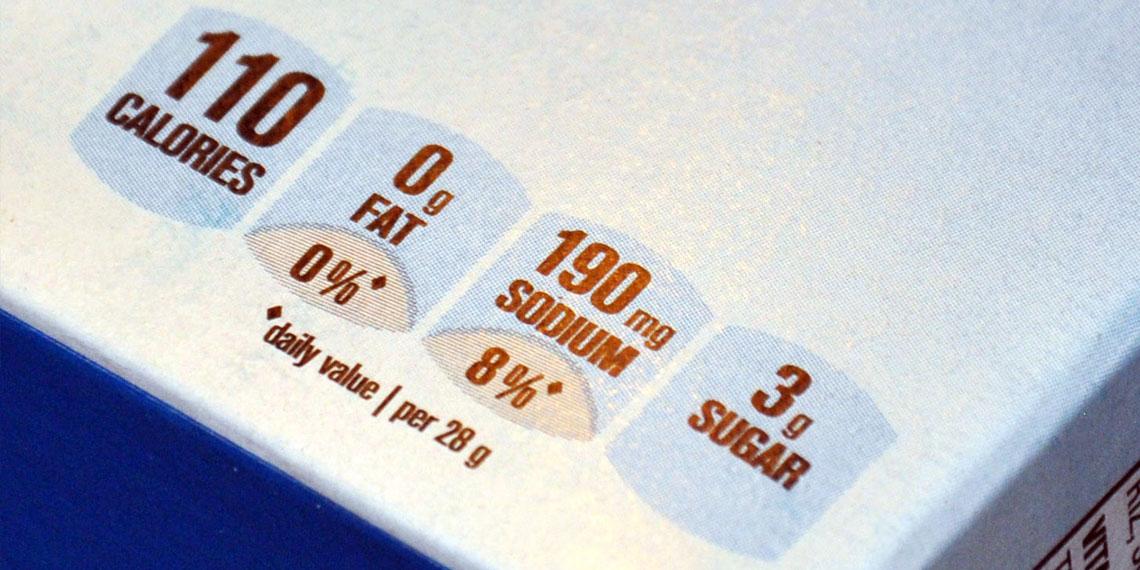How does nutrition labeling affect consumer behaviour?

From low-fat to fat-free, sugar-free to no sugar added, it’s easy to get confused by food labels. If you have trouble making healthy choices at the grocery store, a new food labeling system could help make grocery shopping easier.
Marketing and consumer studies professors Tirtha Dhar and Tanya Mark, along with Alison Duncan, a professor in the Department of Human Health and Nutritional Sciences, are working with a Canadian food retailer to study the effectiveness of the store’s point-based nutrition labeling system that ranks foods according to their nutritional value.
“We want to understand the front-of-package (FOP) system and how to improve it,” says Dhar.
The point system is based on an algorithm that Duncan helped develop. The algorithm analyzes nutrient density of foods and assigns credits for vitamins, minerals, dietary fibre, whole grains and omega-3 fatty acids. Foods are debited for being high in saturated fat, trans fat, and added sugar and sodium. The points appear on the FOP label.

Making the right food choices has a direct impact on consumer health.
“Consumers are always having a difficult time choosing the right product,” says Dhar. “We know from all the research that this is a problem at many different levels. Even when they know a product is good, they make bad decisions later, maybe overeating the good product.”
The study aims to understand whether the nutrition labeling system is effective in helping shoppers choose healthier foods and influencing how they consume them.

“It’s a positive impact to help consumers make healthier choices,”
says Mark. “We’re looking at consumer welfare. We’re using marketing to improve consumer decision-making.”
Food shopping is a complicated process, she adds, and many factors influence the choices consumers make, such as price, advertising and word of mouth.
But too much nutritional information can make consumers feel overwhelmed, and they may not process the information correctly.
“A well-intentioned labeling system can backfire,” says Dhar, adding that how much consumers eat is as important as what they eat. Consumers may negate the benefits of buying healthier foods if they eat much larger portions than recommended on the package. “Low-fat doesn’t imply low-calorie in many cases,” he adds.
The study will include lab and field experiments, and detailed consumer data provided by the retailer. The researchers will look at consumer behaviour, such as what types of foods they bought and how much, based on the FOP labeling system. Surveys will ask consumers how they interpreted and used the nutritional information.
Research shows that the mandatory “Nutrition Facts” table and ingredient list on food packages aren’t very effective at helping consumers make informed choices, so some retailers have developed alternative food labeling systems that are easier to understand. One example is using a green light or a red light symbol to indicate healthy and unhealthy foods.
Retailers also benefit from nutrition labeling systems because they inspire consumer trust in their products.
As rates of diet-related diseases such as diabetes, heart disease and obesity continue to rise, the researchers say that a nutrition labeling system that demystifies food shopping could benefit consumer health.
“Can we improve the way that we provide the nutritional information so that consumers in the end make better decisions?” says Dhar.
Consumers are busier than ever before, so a point-based system could help take the guesswork out of what they buy.
“Having a very simple solution that can help us simplify the process is really important,” says Mark. “We don’t have time to process a lot of information.”
The study is funded by the Ontario Ministry of Agriculture, Food and Rural Affairs.